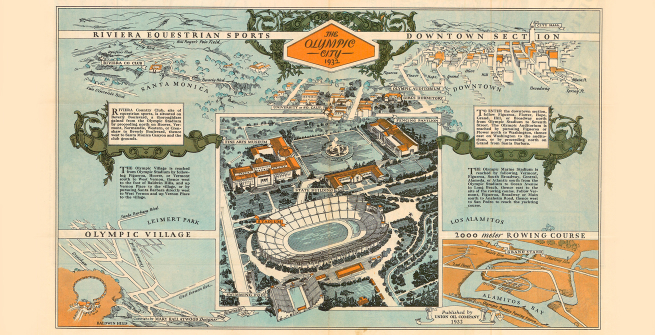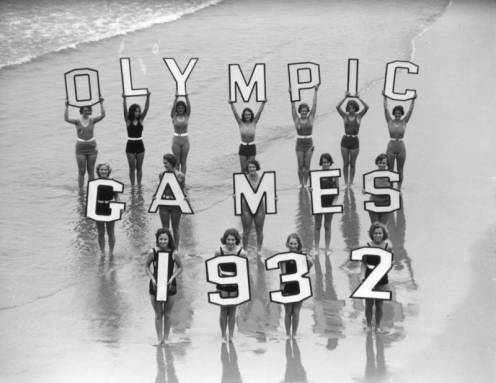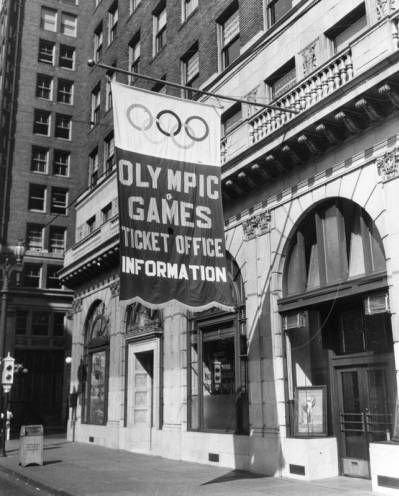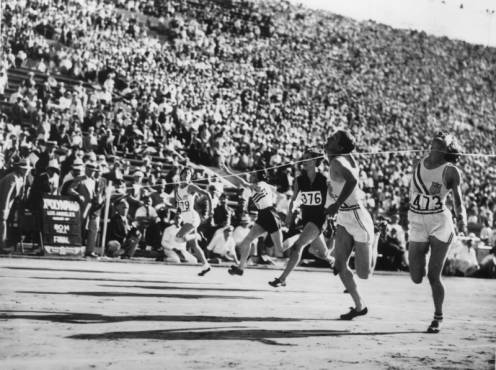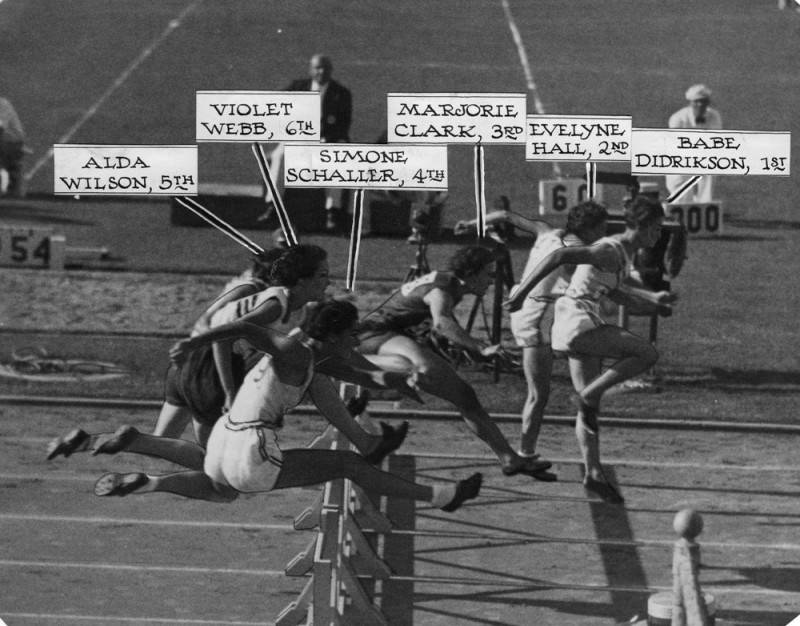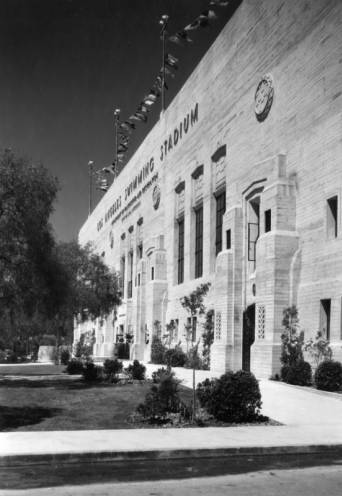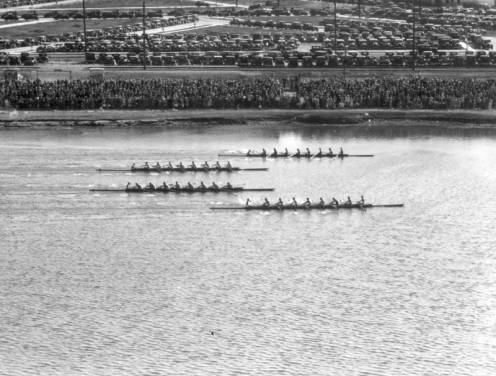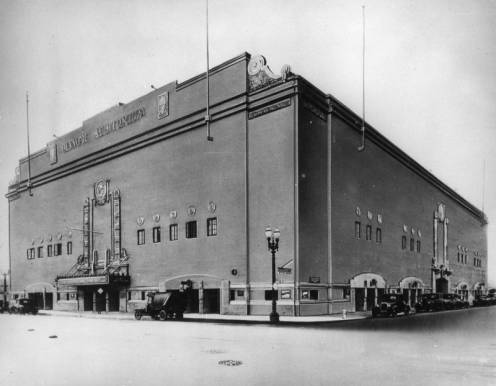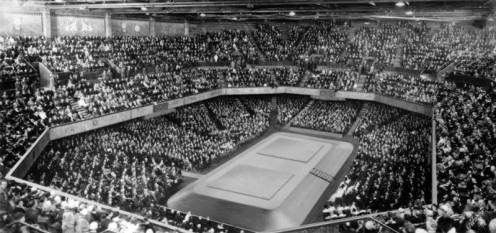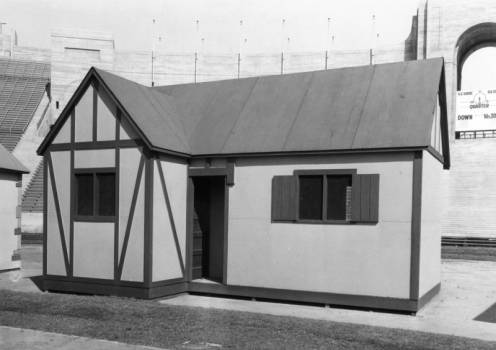While today’s Olympic athletes are breaking records in Tokyo with the help of modern science and training methods the event is no more incredible or impressive than the “little games that could” in the Summer of 1932 in our own dear LA. This beautiful map has two engaging sides, detailing the sites and imagining the colorful celebration of sport dotting the basin from the Pacific Ocean to the newly polished Olympic Stadium. It was miraculous to start that little Los Angeles could capture the games but dogged representative (and later president of the Olympic committee) William May Garland went before the Olympic committee back in 1921 and talked the city of the angels into the big time. It was a gamble in the midst of the depression and a challenge for cash-strapped nations to get to the far off Pacific Coast city. Like in 1984 newspaper naysayers knocked the daring idea but when the games began 105,000 delirious fans jammed what would become the Coliseum and another 50,000 milled around Exposition Park during the opening ceremonies. Thirty-seven nations did make it to our fine city and eighteen world records were either equaled or broken. The great Babe Didrikson Zaharias garnered three gold medals and reminded the nation of the power of women athletes. Instead of a disaster that was foretold by local wags the city bloomed and for one shining month in the dark days of the depression Los Angeles took their place in the great cities of the world.
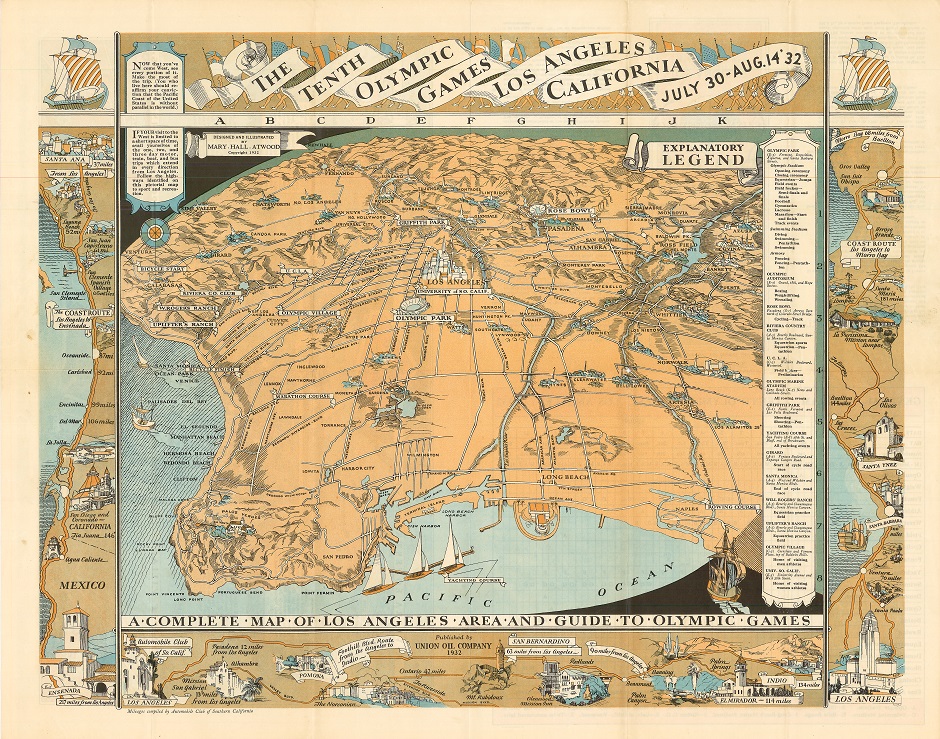
Mary Hall Atwood was a muralist and pictorial mapmaker who had just relocated from Paris and scored two winning cartes. This Olympic map remains very popular and her vision of Long Beach in the following year is beautiful and extremely rare.
1932 Olympic Map, Olympic Games Los Angeles. Cartographer Mary Hall Atwood, Compliments of Union Oil
Our photo collection includes many of the locations of the 10th Olympic Games pictured on the maps. We also have images of Mildred "Babe" Didrikson and her medal-winning races.
1932 Olympic Games promotion. On a Los Angeles area beach, sixteen women, each holding up a letter or number, spell out "O-L-Y-M-P-I-C G-A-M-E-S 1-9-3-2.". Eyre Powell Chamber of Commerce Collection
Funds were provided by the City of Los Angeles for the streets to be gaily decorated with Olympic flags and banners. Spring Street, as seen looking north from 5th Street, is shown here in Olympic regalia. Security Pacific National Bank Collection
Exterior of the 1932 Olympic Games ticket and information office, located inside the National City Bank Building at 810 S. Spring Street (lower left corner) in Downtown Los Angeles. Security Pacific National Bank Collection
A woman, joined by musicians, hangs a sign provided by the Automobile Club of Southern California, identifying the location of the Olympic marathon course nearby. Two other signs offer the distances to where other Olympic venues are located. The marathon started and ended at the Olympic Stadium, [1932]. Photo credit: Eyre Powell Chamber of Commerce Collection
Crowds have filled the Olympic Stadium (the Los Angeles Memorial Coliseum) for the 1932 Olympic Games; the Los Angeles Swimming Stadium, another Olympic venue, can be seen in the upper left. Security Pacific National Bank Collection
Exposition Park, originally named Agricultural Park, was developed in 1876 as a showground for agricultural and horticultural fairs. Architects John and Donald B. Parkinson designed the 1923 Los Angeles Memorial Coliseum, located at 3911 S. Figueroa Street, as well as the expansion for the 1932 Olympic Games. In 1984, the Coliseum became the first stadium in the world to host the Olympic games twice. Security Pacific National Bank Collection
Mildred "Babe" Didrikson competed in three events - winning the javelin and hurdles, with a second in the high jump. Here, the 18-year old wins the 80-meter hurdles, setting the world record in 11.7 seconds in a near-dead heat with Evelyne Hall (far right), [1932]. Security Pacific National Bank Collection
"Babe" Didrikson, that "one-girl track team from Texas", winning the women's 80 meters hurdle race by inches in a close finish of six girls, [1932]. Herald Examiner Collection
Exterior of the Los Angeles Swimming Stadium, built for the aquatic events of the 1932 Olympic Games. Photo credit: Dick Whittington, Security Pacific National Bank Collection
Los Angeles Swimming Stadium, 1932 Olympic Games, [1932]. Security Pacific National Bank Collection
An unidentified Olympian (right of center) has jumped and is about to hit the water at the Long Beach Marine Stadium after a rowing event. Long Beach Marine Stadium, 1932 Olympics. Security Pacific National Bank Collection
Spectators watch as four rowing teams with coxswains from the U.S., Canada, Britain, and Italy compete in the 8 oar rowing event at the Long Beach Marine Stadium during the 1932 Olympic Games. Security Pacific National Bank Collection
Frenchman, Francois Lesage, is seen riding Taine at the Riviera Country Club Olympiad Arena. Olympic equestrian games, [1932]. Herald Examiner Collection
Entrance arches to the polo field of the Riviera Country Club. Polo field will be used in the 1932 Olympic Games. Works Progress Administration Collection
Exterior of the Grand Olympic Auditorium, built specifically for the boxing, weightlifting, and wrestling events of the 1932 Olympic Games. Security Pacific National Bank Collection
Spectators have filled the Grand Olympic Auditorium to watch the Olympic wrestling competitions to be held on the dual platforms seen in the center of the auditorium, [1932]. Security Pacific National Bank Collection
This Olympic Village, made up of several hundred buildings, including post and telegraph offices, an amphitheater, a hospital, a fire department, and a bank, operated from July 30 until August 14, 1932. Security Pacific National Bank Collection
One of the temporary bungalows, erected at the Olympic Village in Baldwin Hills for the 1932 Olympic Games, on display at the Olympic Stadium. Security Pacific National Bank Collection
With the flags of all participating nations flying, athletes, friends, and officials mingle around the main entrance and headquarters of the Olympic Village in Baldwin Hills. Security Pacific National Bank Collection
